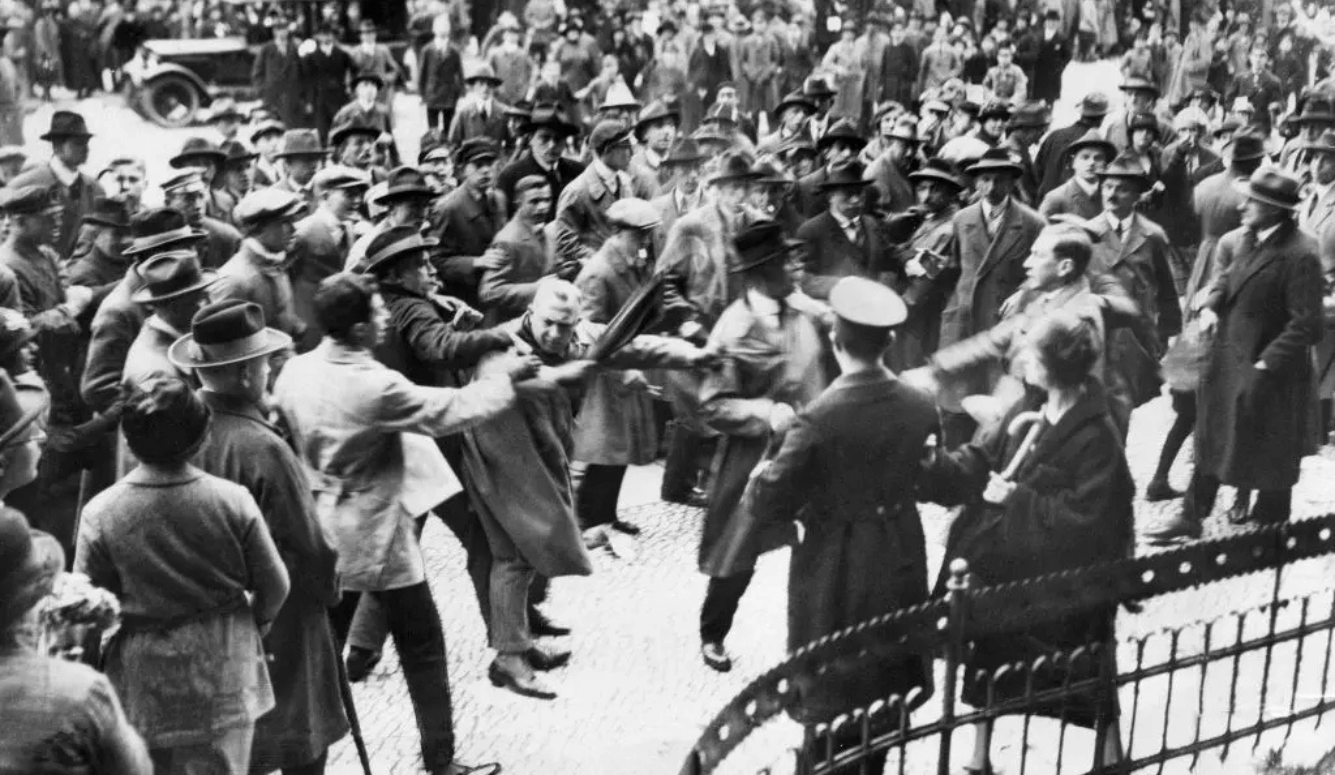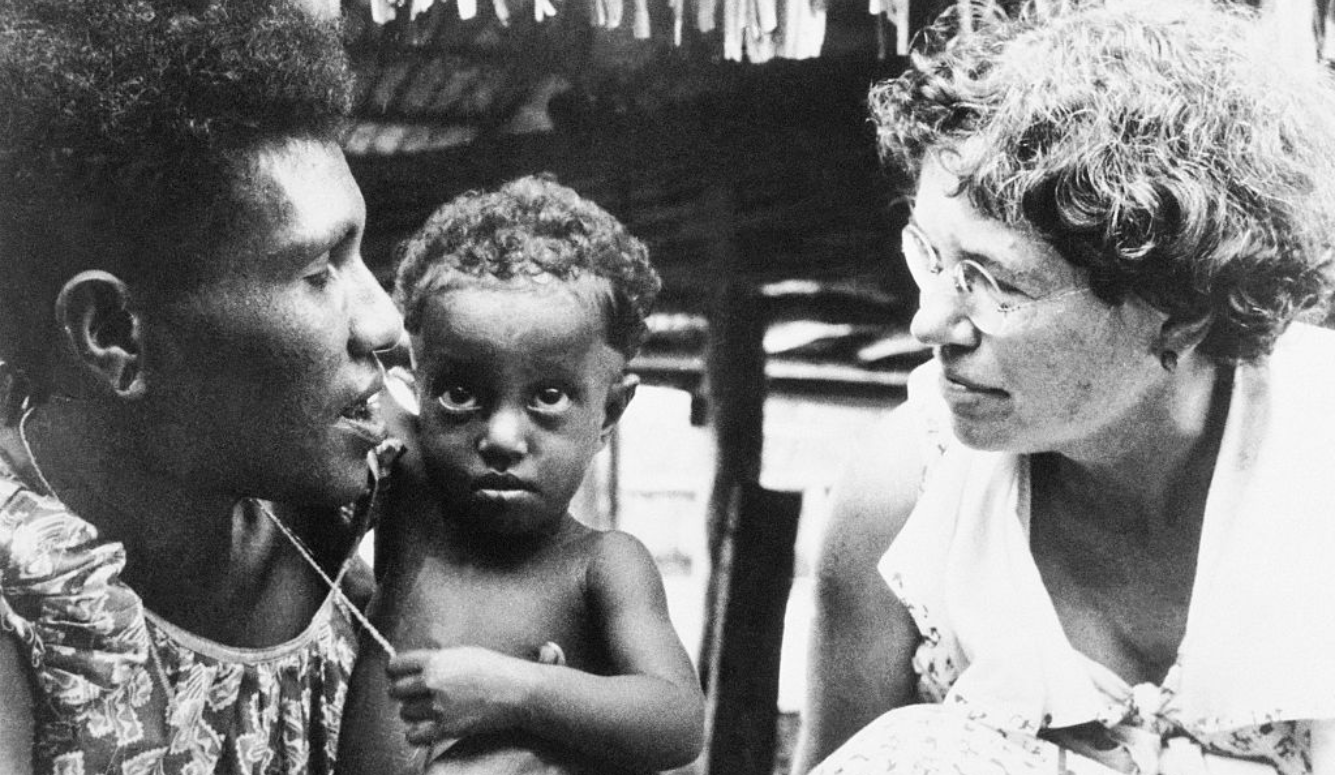History
Hell in North Germany
A riveting new book by American historian Lynne Olson re-examines the story of Ravensbrück, the Nazis’ notorious concentration camp for women.
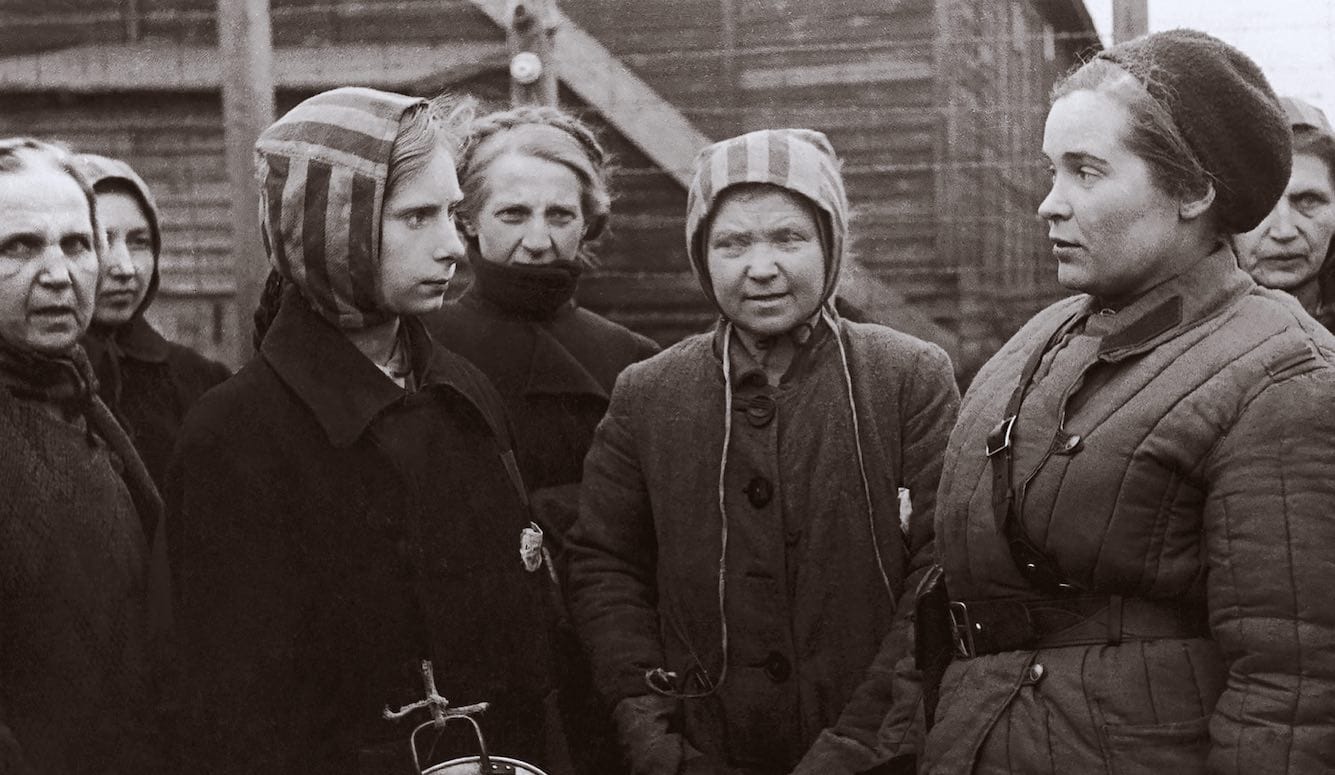
A review of The Sisterhood of Ravensbrück by Lynne Olson, 384 pages, Random House (June 2025)
Tell it to the world.
~a Frenchwoman on her way to the gas chamber.
The Ravensbrück concentration camp was constructed in late 1938 about fifty miles north of Berlin near a former health resort. Although a small camp for male prisoners was built next to the main complex in 1941, Ravensbrück became infamous as the largest camp exclusively for female prisoners within the Third Reich’s “pre-war borders.” Between 1939 and 1942, its prison population grew from 2,000 to 11,000 women. By 1944, it held 26,700, and by January 1945, that number had risen to 70,000. Prisoners were transported there from more than thirty countries: 48,500 from Poland, 28,000 from the Soviet Union, 24,000 from Germany, 8,000 from France, and 2,000 from Belgium. Fifteen percent of the prisoners were Jewish, and eighty percent were political prisoners classified as “race defilers,” “socials,” or simply “criminals.” The majority of the latter were members of various resistance movements against the Nazis. Despite its size, little was known about it until after the Cold War because it was liberated by the Soviets in 1945 and subsequently shielded by the impenetrable Iron Curtain.
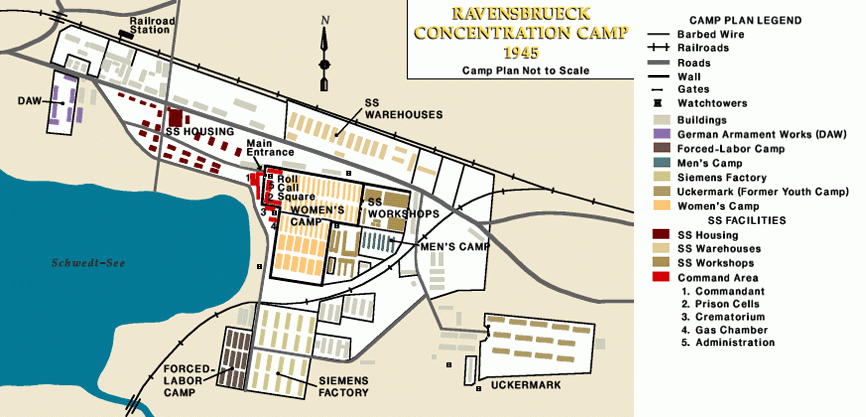
In a riveting new book titled The Sisterhood of Ravensbrück, American historian Lynne Olson re-examines the story of that now-notorious institution (unless otherwise noted, the quotations and facts in this essay are sourced from Olson’s work). Drawing on memoirs, interviews, and freshly unearthed information from Holocaust studies about the camp, Olson tells the story of two inmates who quietly defied their captors to record events that might otherwise have remained buried forever. These inmates are the reason we know as much as we do about the horrors of that camp. “It was really like Dante’s Seventh Circle of Hell,” one of the survivors recalled. “Death was all around us. We learned to read the signs—one could see very well when one of our comrades had given up and could no longer live.” Of the inmates, another said, “I barely noticed their skeletal forms or their shaven heads. [It was] their dead vacant stares. They were living zombies.”
Ravensbrück was not a purpose-built extermination centre like Auschwitz-Birkenau, but it was still lethal. Heinrich Himmler, who oversaw the operation of the Nazis’ camp system as head of the SS, deliberately picked a soggy tract of land for the camp in the middle of a dense forest to hide what was being done there. Prisoners were only allowed to live if they were fit enough to work on a meagre diet. Those deemed unfit were shot on the spot. From 1942, the SS sent those unable to work to the gas chambers at Bernberg, a former sanitarium where 1,600 women and 300 men were murdered, half of whom were Jewish. In early 1945 (according to the US Holocaust Memorial Museum) or December 1944 (according to Olson), Ravensbrück built its own gas chamber in which another 5,000–6,000 people perished before the camp was liberated in April.
There was also a profit motive involved along with the general cruelty of the Nazi regime. Himmler, who leased the land that Ravensbrück was built upon, had established a business in which he was the major stockholder. The inmates at Ravensbrück provided free labour and fresh bodies were needed when they became unfit for the arduous work involved in aiding the German war effort. As one astute inmate noted, “To maintain the prosperity of [Himmler’s] business it was considered necessary to periodically destroy the human equipment that was no longer useful.” Another recalled: “They reduced us to nothing. We didn’t even feel like we had the value of cattle. You worked and you died.”
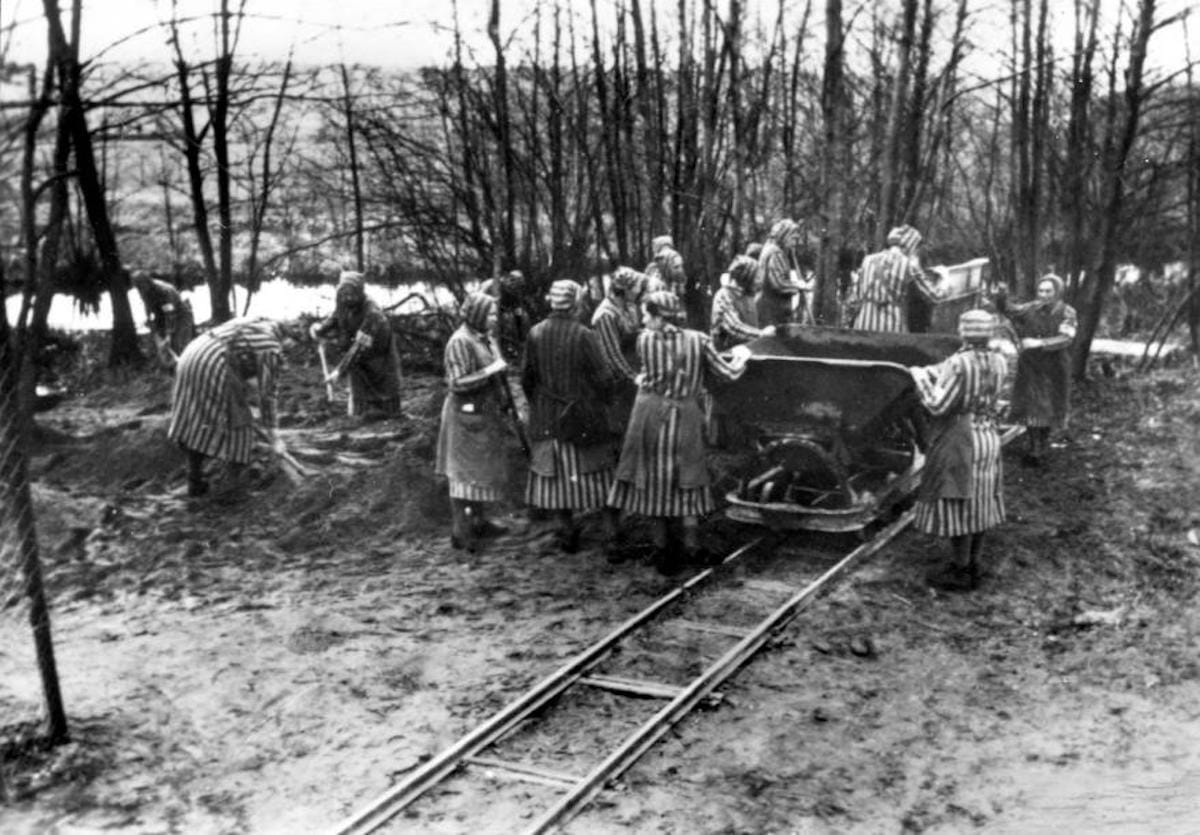
Lacking male upper body strength, the inmates were regularly shot or gassed because they were simply unable to cope with the physical demands of twelve-hour days of slave labour in a camp that was perpetually under construction. Survivor Julia Barry recalled the work conditions: “We stood for hours in rain, wind, snow or frost and there was never a roll call when we didn’t pick up a few dead. … Most of us were rolling sand in wheelbarrows from one place to another.” Others drained marshes, which resulted in a typhus epidemic in the camp. Conditions were so unsanitary that one prisoner became deathly sick within six days of her arrival. Estimates of how many inmates died at the camp—from disease, exhaustion, hunger, beatings, torture, shootings, or poison gas—vary widely, but Olson puts the figure at 40,000.
The slightest infraction of the camp’s rules resulted in sadistic beatings from the guards. They too were women. Circa 1942, a German newspaper ran the following advertisement: “Healthy, female workers between the ages of 20 and 40 wanted at a military site.” Successful applicants were well-paid and discharged their duties with relish. “They were awful people,” said survivor Selma van de Perre. “They liked [the job] probably because it gave them power. It gave them lots of power over the prisoners. Some prisoners were very badly treated. Beaten.” Punishment was arbitrary. Prisoners were whipped and kicked by the female guards or nearly decapitated with shovels.
The most feared of the guards was Dorothea Binz, who became notorious for beating inmates until they were half-dead. She clubbed one woman “until she saw blood pouring out of her nose and mouth,” recalled one survivor, and it is said that she murdered another prisoner with an axe. Another guard named Ruth Neudeck so pleased her superiors with her mistreatment of prisoners that she was promoted to the position of barracks overseer within months of her arrival in 1944. She was fond of kicking over soup pots so she could watch prisoners eat off the ground, sexually abusing inmates, and setting dogs on those who displeased her. She “took off the clothes of some inmates, poured cold water over them and made them stand in the cold for hours,” according to one survivor. As the person in charge of the gas chambers at Ravensbrück, Neudeck helped to send over 5,000 women and children to their deaths.
From 1942 onwards, Ravensbrück served as a training camp for female SS officers, 3,500 of whom worked there. Some of these women were subsequently sent to police Auschwitz. And this was cauldron into which the two resistance leaders at the centre of Olson’s narrative were introduced.
Germaine Tillion was born in 1907. She studied social anthropology and applied it to the study of Berber tribes in Algiers. When Germany invaded France in 1940, she joined the French resistance, helping prisoners to escape and providing intelligence to the Allies. In 1942, she was arrested and sent to Ravensbrück. Anise Girard was born in 1922 in Paris. She grew up watching her mother take in Jewish and Catholic refugees escaping Nazi Germany. She was almost eighteen when the Germans invaded France and she joined the resistance. She was arrested in 1943 and became a political prisoner in Ravensbrück. From the moment they met, Tillion and Girard formed an intense bond. “[Germaine] made me talk about myself, gave me courage,” Girard would later remark.
Together, Tillion and Girard gathered knowledge about the camp, which Tillion then secretly compiled. She believed that knowledge of what was abusing them would give her a kind of power. “If you can understand a mechanism that crushes you,” she said, “if you can mentally dismantle its springs … an apparently hopeless situation can become a powerful source of serenity, composure and fortitude.” Her pre-war work studying the Berber tribes turned out to provide invaluable preparation for dissecting Ravensbrück: “My experience in Algeria had already taught me how to live in an environment that was completely foreign to me and figure out how that society was put together.” Now, her dissertation about the camp amounted to a form of protest: “It was a way of diminishing the power of the enemy: I look at you. I judge you. I weigh you.”
Olson theorises that Tillion’s research also helped her to escape the sense of powerlessness that the Nazis did so much to instil: “[S]he was essentially resisting—searching for the truth of that monstrous place and determined to understand and reveal it at some point in the future. By rejecting the status of submissive victim she had turned the tables on the camp’s system of domination.” Tillion’s resilience inspired other inmates (“I was conscious of giving moral strength to my comrades,” she recalled). “Germaine provided the key to understanding that demented universe,” one survivor said. “When you understand something you can struggle against it. Germaine told us how to read our enemy.” Another wrote that knowledge of the enemy was “a lifesaver for me. When you understand you can fight back.”
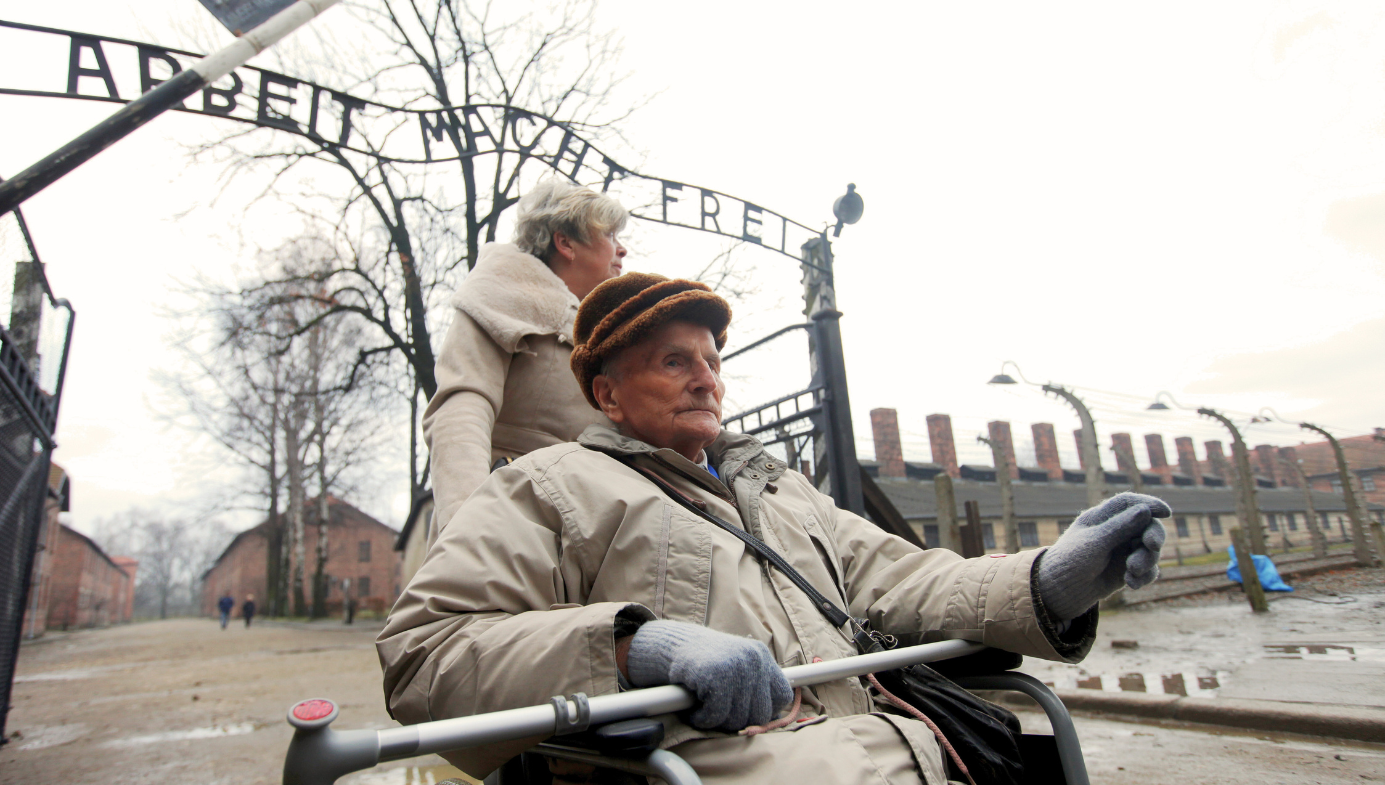
A surrogate family was established by Tillion through shared knowledge. Her barracks served as a classroom. A member of the Italian resistance named Lidia Rolfe recollected “lessons in history, literature, geography, even lessons on how to raise rabbits and tame lions.” Others remembered choir practice and poetry readings. Anise Girard served as Tillion’s research assistant. Fluent in German and outgoing, she became friendly with the Czech, German, and Polish prisoners who worked in the camp’s administrative offices. These contacts became sources of research, providing Girard with lists of the dead and the sick and information about the war itself.
As a result of Girard and Tillion’s work, we know about the insane experiments conducted on inmates at Ravensbrück that officials tried to suppress for decades. The Polish prisoners, considered by the Nazis to be subhuman, were the designated test subjects. “You are a Frenchwoman so you are going to live,” one of them told Girard. “I am a Pole and am going to die.” In a special roll call, doctors made the Polish inmates lift up their skirts so their legs could be inspected. The prisoners were then given hospital gowns and marched to a laboratory. There, Nazi scientists cut the inmates’ legs open and infected the wounds with gangrene and wood and bits of glass to test the effectiveness of sulfonamide drugs. “After the first surgery,” recalled a survivor of six such procedures, “the incision was so deep I could see the bone itself.”

It is a grim irony that this terrible suffering was the indirect result of a 1942 resistance operation in Prague that assassinated Reinhard Heydrich, head of the Nazi Gestapo and the governor of Czechoslovakia. Shrapnel from a bomb thrown at Heydrich’s car by Czech resistance members had pierced his spleen, and when the doctor tending him refused to use sulfonamide drugs to treat the bacterial infection that developed in the wound, Heydrich died. Other experiments involved sterilisation with X-rays and attempts to graft the bones broken off one prisoner with a hammer on to the amputated limb of another. Some of the prisoners died. Others were permanently disfigured and would never walk without crutches again.
But even in this hellish world there was humanity. Polish prisoners, even those left in excruciating pain, aided others (the camp’s nurses were instructed not to provide medical care to these patients). Nina Iwanska, who could see her calf muscle barely attached to her fibula and had the highest fever in the laboratory, nevertheless tended the fevers of her fellow patients with water and compresses. This act kept her faith in God. Before she wondered “Did God exist or not? Why did this happen to me? Should I kill myself or not?” But when her fellow prisoners’ fever subsided, she declared, “Never again would I ask why this happened to us and not others. … Physically I was very tired but morally I was strong.” When it was announced that the experiments would resume in 1943, lists were sent to designated subjects instructing them to report. Remarkably, although they refused, nothing was done to them.
Girard and Tillion, meanwhile, continued to collect information, which they secreted in the barracks. Had it been discovered, they would surely have been shot. Instead, it survived the war and provided historians with valuable evidence of what had been going on at Ravensbrück. Tillion documented the crimes committed by the SS, along with the name and rank of those individuals responsible. Most importantly, she proved that the camp had an operational gas chamber when most historians believed otherwise. The material she assembled was also critical to the prosecution and execution of Ravensbrück’s commandant, Fritz Suhren, and the camp’s SS leader, Hans Pflaum.
As the end of the Nazi regime approached, murder, mistreatment, and starvation in the camp accelerated: “In a matter of days we’d been turned into walking zombies,” recalled French resistance member Jacqueline Marie. “When we left Paris, we were still female prisoners, Now we were animals going to a slaughterhouse.” Tillion stated: “Every night in the barracks, we carried the bodies of the women who died that day into the washroom. And every morning when we went to the washroom we had to step over these bodies, with their bodies already eaten by rats.”
With the Nazis almost defeated, slave labour became pointless. Earlier in the war, prisoners had been made to produce munitions for the Nazi army, but now they were tasked with constructing an airfield and a railroad that would never be used. With only a single bowl of thin soup provided as sustenance each day, hundreds of inmates were now dying on a weekly basis in the camp’s sub-zero temperatures. Those no longer able to work were given lethal injections or shot since the Russian advance into Poland precluded further transfers to Auschwitz. Others were gassed at Ravensbrück, sixty (mostly Polish) women at a time, several times a day. The camp’s resisters began hiding Poles from patrolling guards and taking their places at roll call. They also used dead inmates’ registration numbers to get Polish prisoners placed on work details rather than in the labs for the experiments.
The lethal search for Poles now widened to include a search for those hiding them (Frenchwomen in particular engaged in a “fearful hide and seek,” notes historian Wanda Wotjasik). On Easter Sunday in 1945, 350 Frenchwomen were gassed. Only the intervention of a Czech guard saved Anise Girard from execution. “Our survival depended on the speed of our reactions,” recalled one inmate. As the Soviets and Americans inched closer, however, the killing rate began to decline. Some of the prisoners were even released as a “humanitarian” gesture that Himmler hoped would improve his bargaining position with the Americans (it didn’t). During one of these releases, Tillion and Girard were able to smuggle their damning research out of the camp.
In March 1945, 16,000 prisoners were handed over to the Swedish Red Cross, including 6,000 Jews. It would be a long journey back to safety through Nazi Germany but that was nothing compared to what they had already endured: “[The Red Cross] kept asking us if we were nervous or afraid of the long dangerous journey ahead,” recalled one survivor. “They had no way of knowing that for years we had faced death every moment of every day.” Once they reached Denmark, one of the survivors cried, “We have left hell.” They had survived Ravensbrück. Now it was time to tell the world about it.
When the French prisoners arrived back in newly liberated Paris, an American diplomat was horrified by their appearance, which he described as “a convoy of martyrs, frightfully mutilated, skeleton-like.” The camp had left its mark on all of them. “For me it was a nightmare,” Tillion recalled. “There was no joy. … For months after liberation I was in extreme darkness.” Nevertheless, she continued her research, interviewing former inmates. “I began compiling a list of the dead with the names of the witnesses who saw them die.”
In 1946, Tillion published an essay titled, “In Search of the Truth,” and then spent the next forty years adding new data to it. That essay turned out to be of critical importance to British prosecutors at the Ravensbrück war-crimes trial because Suhren had destroyed every physical document related to the camp. In 1947, Dorothea Binz was executed as a war criminal. Ruth Neudeck was executed for war crimes in 1948. Fritz Suhren was executed in 1950.
Justice was not to be completely served, however. “Of the thousands of SS officials, guards, and others who worked at the camp over the six years of its existence, only thirty-eight … were brought to justice,” Olson notes. “Of that number, nineteen were executed, sixteen imprisoned, and three acquitted.” Still, memories of solidarity at Ravensbrück remained: “Our time there taught me a lot about the horror of which men are capable,” one survivor recalled. “But it also taught me a lot about the extraordinary courage and dedication of people, too. Even when we were subjected to every possible way to destroy us, we refused to allow that to happen and were able to resist.”
“History forgot Ravensbrück,” historian Sarah Helm observed as late as 2015. “Today [it] is hidden from view; the horrific crimes enacted there and the courage of the victims are largely unknown.” Thanks to Olson’s wonderfully compact but deeply researched book, interested readers can now absorb the full horror of that terrible place and the courage of those who risked their lives to bring us the truth of what happened there. In doing so, they not only recorded an important piece of Nazi history, they also demonstrated a dogged and inspiring commitment to humanity in circumstances that must have seemed hopeless.
CORRECTION: Anise Girard was born in 1922 not in 1928. Quillette regrets the error.



